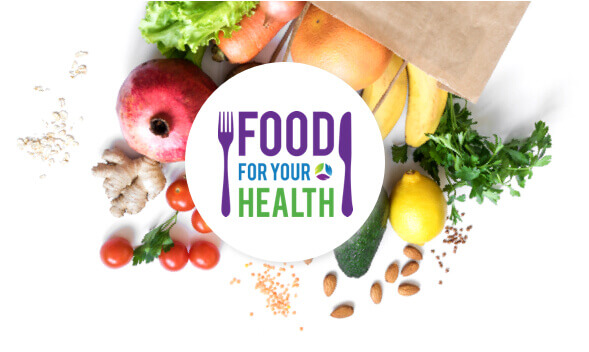
14 Jun 2021 5 tips to support blood sugar balance – Diabetes Awareness Week 14-20th June
Diabetes Awareness Week – 14-20 June

Firstly, let’s discover how prevalent diabetes is, and the risk factors to consider?
Diabetes in the UK
Current figures show that more than 4.9 million people have diabetes in the UK and a further 13.6 million are considered at risk. Of these, 90% have Type 2 diabetes mellitus (T2DM), the most common type, which is heavily influenced by dietary and lifestyle factors. By 2030 it is expected that the number of people living with diabetes may reach 5.5 million in the UK (1) which is an alarming prediction. T2DM is considered a non-communicable disease, meaning it develops because of underlying metabolic imbalances, and is largely preventable according to the World Health Organisation (WHO) (2). Risk factors include overweight, obesity, dietary choices, and levels of physical activity. Encouragingly, these are all modifiable factors, that can be optimised as prevention for, and support of T2DM.
What is T2DM?

Overweight, Obesity and T2DM
Overweight and obesity are two of the key risk factors for developing T2DM. Obesity is believed to account for 80-85% of the risk of developing T2DM and recent research suggests that obese people are up to 80 times more likely to develop T2DM than those with a BMI of less than 22 (3). Current data shows that 63% of the British population is now classified as overweight or obese (4). Carrying excess weight around the abdominal area is particularly significant, as waist circumferences greater than 80cm in women and 94cm in men increases risk factors. Supporting a healthy weight may decrease the risk of T2DM. More information on this can be found on our Overweight and Obesity fact sheet.
Blood Sugars, Insulin and T2DM
Sugars, from the foods we eat, are kept in a safe optimal range by the body which releases insulin to transport these sugars from the blood into our cells. When we regularly consume too many sugars this mechanism can break down and work less efficiently, and over time the body stops responding to insulin, leaving blood glucose levels dangerously elevated. This is the definition of T2DM. Additionally, these excess sugars can also be converted into fat mass, increasing the risks of becoming overweight or obese.
More information on this can be found on our Blood Glucose Regulation and Insulin Resistance fact sheets.
Personalised Nutrition & Lifestyle as prevention and support for T2DM
Registered Nutritional Therapy Practitioners work one-to-one with clients to help optimise their diets and reduce their risk factors for metabolic conditions. There are many dietary and lifestyle changes that have been shown to help support healthy weight management and blood glucose regulation.
Here are 5 simple tips to help you support your blood sugar balance:
- Switch to wholegrains

- Aim for a wide variety of fruits and vegetables

- Add a portion of protein

- Cut down or cut out snacks
Snacking between meals can lead to a vicious cycle of sugar highs and lows and a continual release of insulin to regulate blood glucose levels. Some people may benefit from eating little and often however, for many of us, snacks are often a habit rather than a necessity. Reducing, or better yet removing, snacks between meals allows your blood glucose level to regulate itself and reduces the production of insulin and likelihood of developing insulin resistance. Next time you are feeling peckish why not grab a glass of water instead and see if you can make it 4-5 hours between meals.
- Processed foods – get to know what you are eating
Processed foods can be rich in salt, sugar, and saturated fats. They often have the fibre removed and lack the nutrient content of natural wholefood ingredients. Regularly consuming processed foods likely increases your intake of free sugars and may contribute to weight gain and blood glucose imbalances. Get to know your foods by reading the labels. Aim to fill your basket with more fresh, seasonal ingredients and limit the more heavily processed foods. Consider making meals from scratch, helping to avoid unnecessary processed ingredients. For more help, download our Fight the Fat – Beat the Bloat infographic.
What about lifestyle habits and T2DM?
Whilst diet is a large part of our health and well-being, we also know that exercise, sleep, stress reduction and other lifestyle habits also contribute. These may differ from one person to the next however some useful guidelines are:
- Aim for 6-8 hours’ sleep per night
- Make time for regular exercise. The WHO recommend 150 minutes per week for adults and 60 minutes daily for children. Download the WHO Infographic (5).
- Manage your stress with relaxation techniques and activities.
For more evidence-based support for your health and well-being, visit our Food for your Health campaign website where you will discover our Nutrition Evidence Database NED Info Bites
Anybody can develop symptoms of metabolic dysregulation. Nutritional therapy is the application of nutrition and lifestyle medicine sciences in the promotion of health, peak performance, and individual care. To find a Registered Nutritional Therapy Practitioner visit bant.org.uk and join us at BANT to start the journey towards a healthier you.
For more on Diabetes Awareness Week visit: https://www.diabetes.org.uk/diabetes-week
References:
- https://www.diabetes.org.uk/professionals/position-statements-reports/statistics
- https://www.euro.who.int/en/health-topics/noncommunicable-diseases/ncd-background-information/what-are-noncommunicable-diseases
- https://www.diabetes.co.uk/diabetes-and-obesity.html
- https://www.healthexpress.co.uk/obesity/uk-statistics
- https://www.euro.who.int/__data/assets/pdf_file/0004/286753/physical-activity-daily-life.pdf
Contributors:
Chloe Steele & Claire Sambolino
BANT Registered Nutritionists ®


